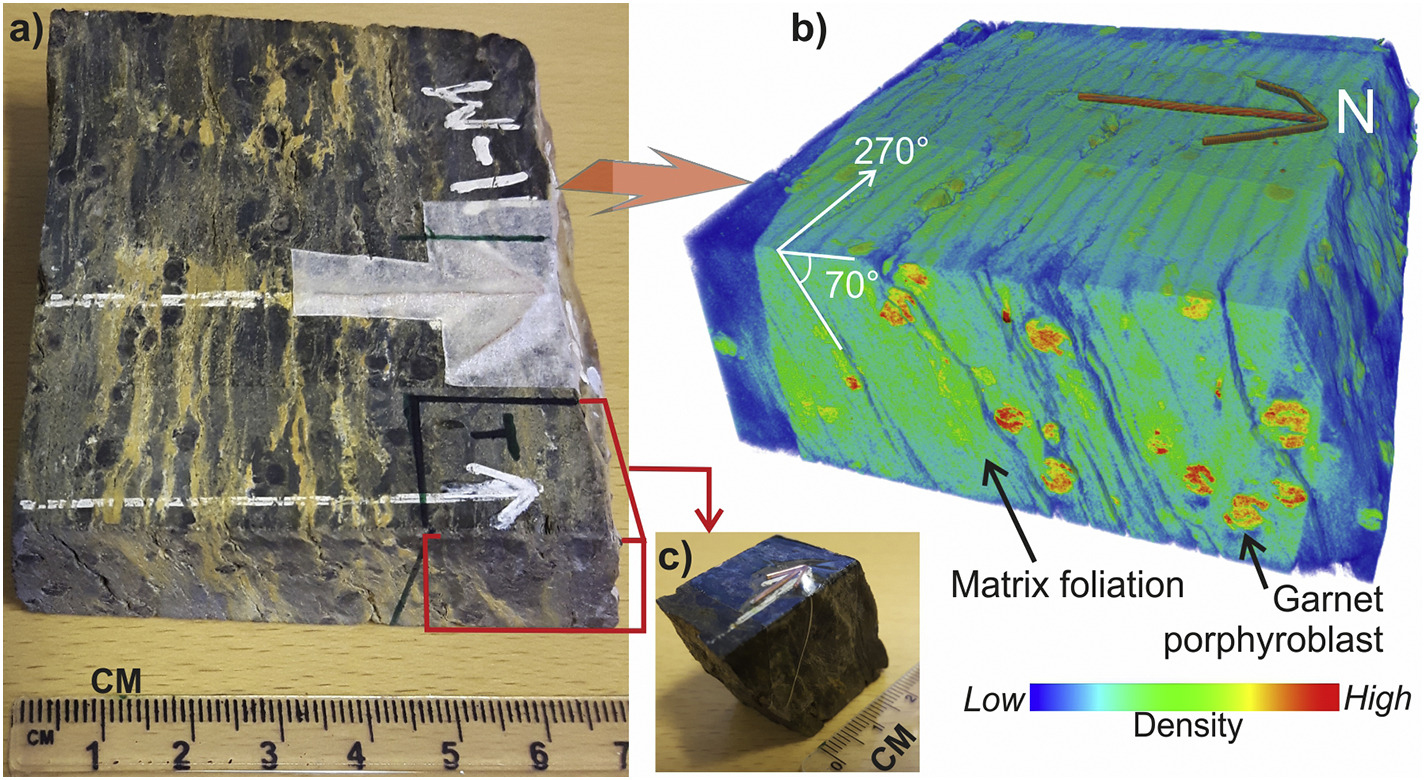Tectonic evolution of the Karakoram metamorphic complex (NW Himalayas) reflected in the 3D structures of spiral garnets: Insights from X-ray computed micro-tomography
- Virtual petrography, 3D textures and quantitative analysis of spiral garnets.
- Micro-fold axis determination in spiral garnets using X-ray computed tomography.
- 3D spiral patterns unlock the tectonic history of the Karakoram Himalaya.

Spiral garnet porphyroblasts are known to record lengthy periods of deformation and metamorphism by preserving single or multiple FIAs (Foliation Intersection Axis) formed normal to tectonic shortening directions. Thanks to technological advances in X-ray computed micro-tomography (XCMT), FIAs can now be readily determined in relatively large samples in contrast to previous methods that require the preparation of a set of radial vertical and horizontal thin sections of samples. XCMT scanning not only alleviates tedious thin section based procedures but also illuminates the complete internal architecture of a rock sample allowing three-dimensional (3D) quantitative shape analysis of an individual porphyroblast as well as precise measurement of FIAs.